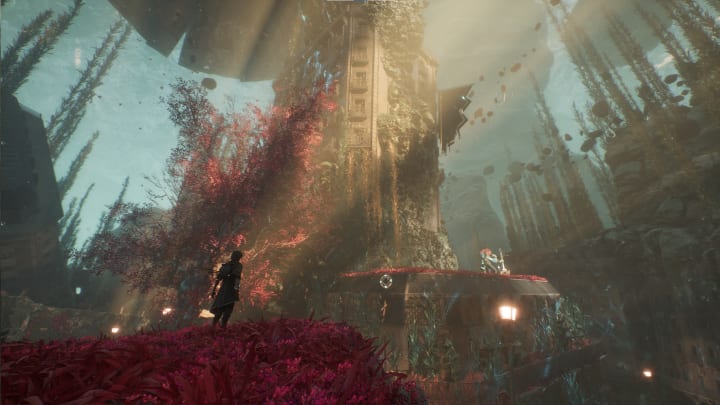Clair Obscur: Expedition 33 is a unique JRPG that goes deeper than you expect

When a JRPG-style game is made by a Western development team, you usually end up with one of two results: a game that is a beat-for-beat homage to something the team was nostalgic for, or something that tries to innovate on the genre but wildly misses the mark. That might mean that Clair Obscur: Expedition 33 is a world first, as it manages to take the genre in a new direction without losing sight of why fans love it in the first place.
It felt surreal to see what is by all measures a traditional JRPG combat system play out with full triple-A realistic graphics, but that’s what Expedition 33 has brought to the table, alongside a heap of interesting gameplay systems.
The flashiest of these are the real-time elements mixed into this turn-based combat system. During any attack by you or an enemy, you can hit simple button-press quick-time events to either enhance your attack or avoid taking damage – it reminded me of the Mario & Luigi games, only taken to the extreme.
By using these QTEs on the offensive, you can rush through encounters in no time, but in a more engaging way than just having an “auto-fight” or “speed-up” button, which I generally see as a failure to design interesting combat. The same goes for the defensive side of things, as you can either dodge attacks or go for a tougher parry, which will negate damage, let your characters earn back Action Points, and if you parry every attack in the sequence, you can counter-attack.
It opens the door for great things like a no-damage run of the game, which the team told me is entirely possible if you have a solid handle on the QTEs.
As for what an average turn looks like, you have to manage your character’s AP, which limits what attacks and abilities you can use, with characters having to skip turns if they don’t have enough. You have plenty of ways to dynamically regenerate it though, like successfully parrying or countering, which stops the pace from slowing down too much.
On top of that, each character has a unique battle mechanic, which adds even more variety. These are things like more powerful attacks, temporary stat boosts, or a stance system that changes that character’s abilities. Each character has their own skill tree, with abilities that synergize with those of other characters. It’s simple stuff, like one character inflicting a status condition that another character can take advantage of, but it all adds up to make party composition surprisingly deep.
That’s before even getting to the stats and gear side of things, and even here Expedition 33 takes an interesting approach. Each character only has five stats, which isn’t many for a JRPG – there’s no physical/magical attack split, for example – instead, all of the complexity has been stuffed into the gear.
The game uses a system called “Pictos” where you can equip accessories that confer stat bonuses, status condition immunities, or special boosts when certain conditions are met, and over time characters will master these Pictos. Once they do that, it becomes a “Lumina” which is a permanent boost, allowing you to switch out mastered Pictos for new ones and slowly build up sets for every character, seeing them grow more and more powerful as the game goes on in ways beyond the standard level-up stat boosts.
On top of that, every weapon has its own level, which unlocks more powerful abilities the more familiar a character gets with it. This is a rabbit hole that keeps getting deeper, and you could quite easily sit there for hours optimizing your party.
All of this is wrapped up with an intriguing story. Every year an all-powerful being known as the Paintress arrives and paints a number on a pillar, counting down every year, and when she does, all people of that age die. So with a population dwindling and the oldest members of society being just 33 years old, we follow the expedition looking to stop the Paintress forever.
There is an expedition every year though, and so far all of them have failed, and as the journey goes on you’ll find the remnants of every one of them that failed. Sometimes it’s part of the story, but other times it’s just scattered throughout the levels. Many of the rest-stops you can use to restore your health are camps left by previous expeditions, and while I didn’t get to dive too deep into it, it certainly looks like there’s a lot of rich lore to be had there.
I have hope that the story will be well told too. In an era where so much of the writing in triple-A games feels stifled and cringe-worthy, the handful of cutscenes I got to see here felt natural with excellent voice acting bringing life to solid dialogue.
I’m left feeling very optimistic about how Expedition 33 will turn out. The combat has plenty of depth to keep my attention for a long time – and while I couldn’t get a number out of the team, they assured me that it is indeed a “long” game. Plus, this small glimpse of the story has me wanting to know more about the world and the characters in it, which is super important for a JRPG. The whole thing feels unique, yet familiar, and it has now become one of my most-anticipated games of 2025.
